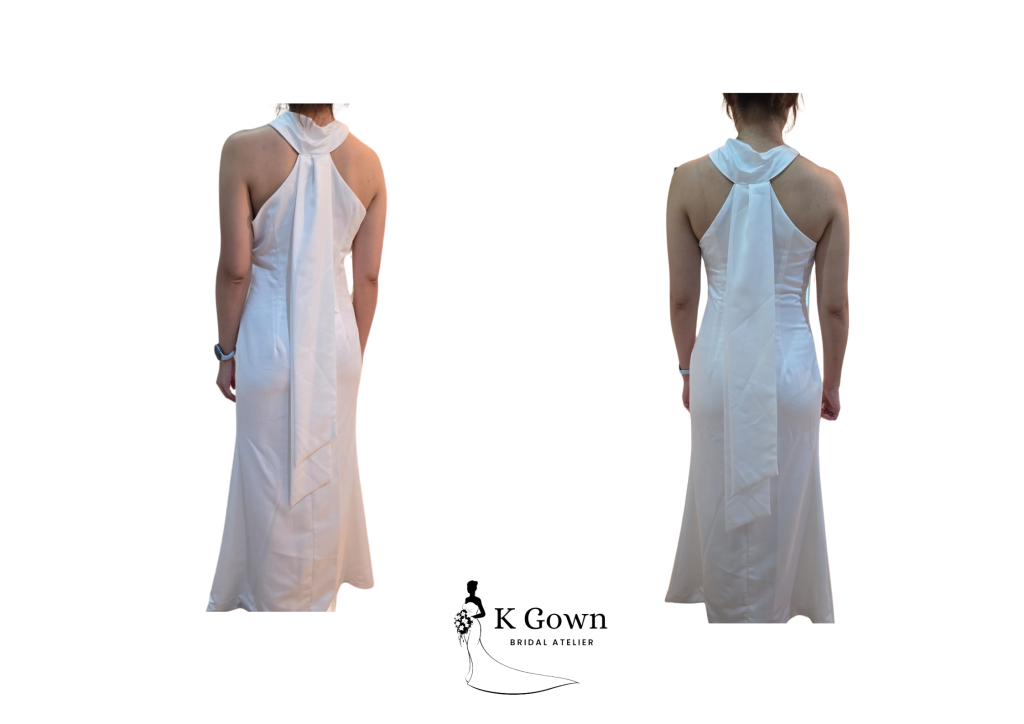As a wife, mother, and entrepreneur, I wear many hats. And while I love designing beautiful gowns and helping brides feel confident on their wedding day, my most important role is to take care of my family’s future. That’s why I’ve made insurance and investments the cornerstones of our financial plan.
In this blog post, I’ll share how I strategically combined insurance and investments to create a safety net and achieve our long-term financial goals while living in one of the most expensive city in the world – Singapore. I hope my experiences will provide valuable insights and inspiration for your own financial journey.
Why Insurance and Investments are a Powerful Duo
Think of insurance and investments as two sides of the same coin. Insurance protects you from the unexpected, while investments help you build wealth and achieve your dreams. Together, they create a powerful foundation for long-term financial security.
Here’s how they work together:
- Insurance as a Safety Net: Life can throw curveballs. Insurance provides a safety net, protecting your loved ones from financial hardship in times of need, such as illness, disability, or unexpected death.
- Investments for Growth: Investments help your money grow over time, allowing you to achieve your financial goals, such as buying a home, funding your children’s education, or retiring comfortably.
What is Financial Resilience? And How to be Resilient?
For me, financial resilience means having the ability to endure major life events without experiencing financial hardship. Financial resilience allows me to control my money and having the freedom to lead a more meaningful and impactful life.
Financial resilience might seem intimidating to many. Since schools often don’t cover topics like emergency funds, investing, or taxes, managing these as adults can feel unfamiliar.
Here’s a glimpse into how I strategically combined insurance and investments in our family’s financial plan:
1. Insurance:
The projected life expectancy in Singapore for 2024 is 84.19 years, meaning most people will live past 70. However, that’s not always guaranteed. I came across a news story about a 35-year-old chef who passed away. It struck me because he was my age, and it made me consider what would happen to my children, parents, husband, and business if something similar happened to me.

Source: https://www.macrotrends.net/global-metrics/countries/sgp/singapore/life-expectancy
Insurance fundamentally operates as a risk pooling system. The more extensive the coverage and the longer the policy term, the higher the premium. This is where strategic planning becomes important. With a fixed monthly or yearly budget, the challenge is to secure comprehensive coverage that can handle unexpected health emergencies without destabilizing the family’s financial stability.
Read the basic planning guide here for key needs, rules of thumb and what-to-do. It’s important to recognize that our actions and choices today play a crucial role in shaping what lies ahead.
- Life Insurance: We have a combination of term and whole life insurance policies to provide comprehensive coverage for different stages of our lives.
- Critical Illness Insurance: Provides a lump sum payment if we’re diagnosed with a covered critical illness, helping us cover medical expenses and other financial needs.
- Hospitalization and Surgical Insurance: Covers the costs of hospitalization and surgery, ensuring we have access to quality medical care without worrying about the financial burden.
- Long-Term Care Insurance: This protects our income stream in case either of us becomes disabled.
It’s a safety net we hope we never have to use, but when tragedy strikes, it can be the lifeline that protects our loved ones from financial ruin. It’s a bittersweet reminder that while we can’t predict the future, we can prepare for it and ensure those we care about are taken care of, even when we’re no longer there.
2. Investments: Building Long-Term Wealth while Aware of the Short-term Opportunity
- Proven track record: Past performance isn’t a guarantee of future results, but a proven track record can give you confidence that an investment has the potential to perform well over the long term.
- Diversified Portfolio: Diversifying among various types of investments, such as stocks, bonds, and real estate, along with different sectors or industries, can help lessen risk. When one investment doesn’t do well, others might perform better, balancing your overall returns. Different strategies or investment tools can behave very differently under various market conditions.
- Minimal Monitoring: Extensive checking your investments can lead to emotional decision-making and higher trading fees. A long-term approach with minimal monitoring helps you stay focused on your goals and avoid impulsive actions. Fastest finger first might not always be the best thing to have.
- Spare Fund and Opportunity: Volatility, risks, and rewards have always been part of the equation. Opportunities are always present. What matters is having a curious mind, arming yourself with investment knowledge, and only investing in products you fully comprehend.
My Personal Investment Journey
I’ve always believed in the power of investing to build a secure future. Shortly after my first job, I bought my first property in Vietnam for my parents’ retirement. This was a significant financial decision, but I carefully researched the market, considered the long-term potential, and took the leap. Not only have my parents been able to retire comfortably in a beautiful home, but the property’s value has also increased significantly.
Another strategy I often use in my financial planning is a brief yet focused accumulation phase to secure long-term returns. Being an only child, I’m responsible for providing my parents’ allowance, as we don’t have a program like CPF Life. Essentially, I am their CPF Life. My goal was to save a substantial amount to invest, ensuring it generates enough returns to cover their allowance in Vietnam.
Reflecting on the past, these preparations have saved me quite a bit of stress, particularly with two growing sons to look after.
This planning has given me financial stability and the freedom to pursue other goals, like growing K Gown and doing what I enjoy most—creating beautiful wedding gowns and developing financial plans for others.
My Wake-Up Call When Insurance Gap is Realized
Before joining the insurance business, I didn’t pay much attention to my own policies. I had an Integrated Shield Plan and a whole life insurance policy, but I rarely reviewed them. It wasn’t until I delved deeper into the world of insurance that I realized how vulnerable my family was.
I was shocked to discover that my husband’s coverage was woefully inadequate. He only had S$30,000 in death and critical illness coverage. For a family of four, that wouldn’t last long in the face of a serious illness or unexpected tragedy.
This realization was a wake-up call. I immediately took steps to improve our coverage and ensure our family was properly protected.
Before entering the insurance industry, I rarely examined my own policies. I owned an Integrated Shield Plan and a whole life insurance policy, but I am not very clear in the details. It was only after I delved deeper into the world of insurance that I realized how vulnerable my family was.
I was surprised to learn that my husband’s coverage was significantly lacking. He had just S$30,000 in death and critical illness coverage, which wouldn’t be sufficient for a family of four facing serious illness or an unexpected events.
This realization was eye-opening. It was like suddenly seeing a gap in my family’s financial armor. I knew I had to take action, but I also understood that building a comprehensive insurance strategy takes time and careful planning.
Instead of feeling overwhelmed, I decided to take a step-by-step approach. I started by prioritizing the most essential coverage, like life insurance and critical illness insurance, to provide a basic safety net. Then, as our finances allowed, I gradually added other layers of protection, such as disability income insurance and hospitalization coverage.
This gradual approach allowed me to:
- Align with our budget: I could comfortably incorporate insurance premiums into our monthly expenses without feeling strained event with existing commitment.
- Prioritize our needs: We focused on the most critical coverage first, then added more as our needs evolved.
- Avoid feeling overwhelmed: Building our insurance portfolio step by step made the process less daunting and more manageable.
Just like building a house, creating a strong financial foundation takes time and careful planning. It’s about making smart choices, prioritizing your needs, and gradually building a structure that can withstand life’s storms.
If you’re feeling overwhelmed by the thought of insurance planning, remember that you don’t have to do it all at once. Start with the essentials, and gradually add more coverage as your circumstances change and your budget allows.
This approach not only ensures your family is protected but also empowers you to take control of your financial future, one step at a time.
Don’t Wait for a Crisis
Throughout my professional journey, I have gained a significant insight that I believe is essential for everyone to understand.
Don’t wait for a crisis to realize the importance of insurance as this can lead to unnecessary stress and complications.
Instead, I encourage you to take proactive steps right now by reviewing your current insurance coverage. It is wise to ensure that you have the right protection in place, ready to support you when you need it most.
If you feel the same way, it’s never too early to focus on your financial well-being.
You can kickstart your financial planning journey on your own or let me know if you need me to go through with you today.
My goal is to introduce you the holistic total wealth concept and developing a plan that ensures peace of mind and security for you and your loved ones in just 45 minutes.






























































